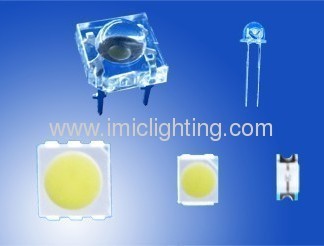Product (207)
- LED Flood Lights (71)
- LED Bulkhead Light (8)
- LED High Bay Lights (9)
- LED Street Light (8)
- LED Gas Station Light (3)
- LED Work Light (2)
- LED Ceiling lights (16)
- LED Panel Light (4)
-
LED Corn bulb lights
(4)

- E27 Base series (4)
-
E27/GU10/MR16 LED Lamps
(17)
- COB LED Lamps (17)
-
LED Bulbs
(25)
-
LED Dome Light (3)

- LED PL lamp (2)
- LED Ceramic bulb lights (9)
- LED Candle Lights (5)
- LED Bulb lights (6)
-
LED Dome Light (3)
- LED Cabinet Light (4)
- Others (36)
Suggestions (2)
Certificates (11)
Knowleage (8)
Why us (6)
Factory Photo (21)
Credit Report
Products Index
Company Info
Ningbo MIC Lighting Co.,Ltd. [China (Mainland)]
Business Type:Manufacturer, Trading Company
City: Ningbo
Province/State: Zhejiang
Country/Region: China (Mainland)
Knowleage
What is LED

LED stands for Light Emitting Diode
An LED is a special type of semiconductor diode. Like a normal diode, it consists of a chip of semi conducting material impregnated, or doped, with impurities to create a structure called a p-n junction. As in other diodes, current flows easily from the p-side or anode to the n-side, or cathode, but not in the reverse direction. Charge-carriers-electrons and electron holes flow into the junction from electrodes with different voltages. When an electron meets a hole, it falls into a lower energy level, and releases energy in the form of a photon as it does so. LED development began with infrared and red devices made with gallium arsenide. Advances in materials science have made possible the production of devices with ever shorter wavelengths, producing light in a variety of colors.
LEDs are usually built on a n-type substrate, with electrode attached to the p-type layer deposited on its surface. P-type substrate. Substrates that are transparent to the emitted wavelength, and backed by a reflective layer, increase the LED efficiency. The refractive index of the package material should match the index of the semiconductor, otherwise the produced light gets partially reflected back into the semiconductor, where it gets absorbed and turns into additional heat.
Conventional LEDs are made from a variety of inorganic semiconductor materials, producing the following colors:
Aluminium gallium arsenide (AlGaAs) -- red and infrared
Aluminium gallium phosphide (AlGaP) – green
Aluminium gallium indium phosphide (AlGaInP) – high-brightness orange-red, orange, yellow, and green
Gallium arsenide phosphide (GaAsP) – Red, orange-red, orange, and yellow
Gallium phosphide (GaP) – red, yellow and green
Gallium nitride (GaN) – green, pure green (or emerald green), and blue
Indium gallium nitride (InGaN) – near ultraviolet, bluish-green and blue
Silicon carbide (SiC) as substrate-blue
Silicon (Si) as substrate-blue (under development)
Sapphire (AI2O3) as substrate-blue
Zinc selenide (ZnSe)-blue
Diamond (C) – ultraviolet
Aluminium nitride (AIN), aluminium gallium nitride (AlGaN)-near to far ultraviolet
Next Page:
What is High power LED



